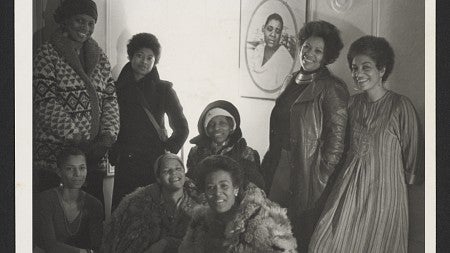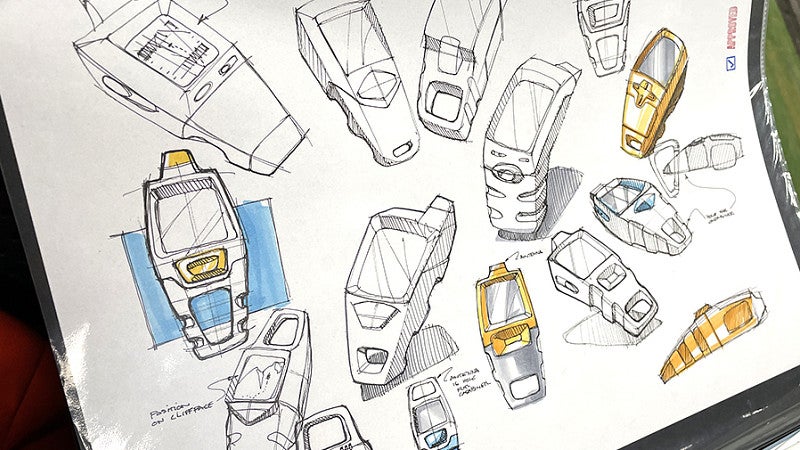
Teaching by Design with Trygve Faste
Trygve Faste, the Tim and Mary Boyle Chair in Material Studies and Product Design, applies professional skills to teaching
By Ed Dorsch • Photos by Nic Walcott and courtesy Trygve Faste • January 19, 2022
7 min readOn a cloudy, breezy November day, product design students gather at the University of Oregon’s downtown Eugene outpost, 942 Olive Street, for a design sketching class taught by professor Trygve Faste. With exposed brick, moveable tables, and ample magnetic whiteboards, the building feels more like an urban design studio than a university classroom.
One by one, the students present their drawings of novel toy concepts: interchangeable soles for children’s shoes; a walkie-talkie glove; and the Guppy Gun, a fish-shaped toy that fills, seals, and launches water balloons. One toy, the Avelo, looks like a flying squirrel (and it flies). Modular miniboats, called Moats, come in bright red, yellow, and blue. The Jet Soaker is a combination squirt gun and airplane that encourages active, imaginative play—and battles with water.
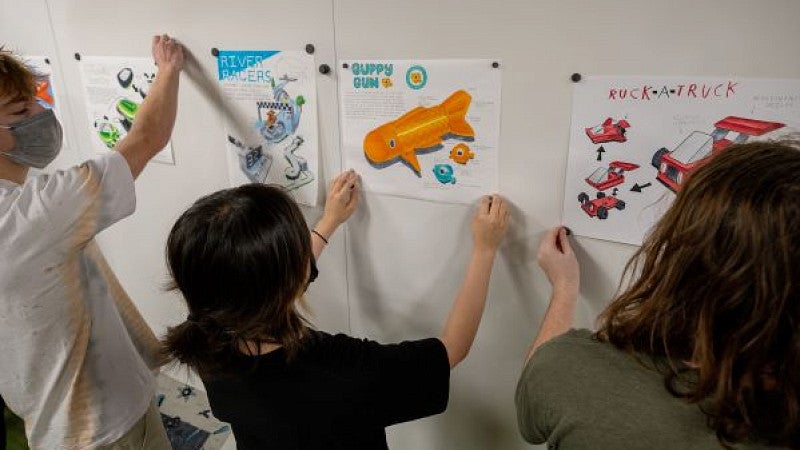
Faste, head of the Department of Product Design, leads the collaborative review session. But he doesn’t give the most feedback.
Instead, students eagerly, respectfully offer constructive criticism, buffering candid feedback with generous compliments. Pretense and egos are absent. The students share a common, transcendent goal: to create the best drawing possible—not just as art, but as an illustration that conveys the toy’s concept.
Faste talks to the students about shading, color, and technique. He uses a dry-erase marker to demonstrate visual concepts, explaining the complications of intersecting cylinders and the subtleties of translucent objects.
He teaches his students by sharing what he’s learned as a designer for Hasbro, IDEO, John Deere, FakeSpace, Tiger Electronics, and other companies. Of all the class activities, says Faste, this day most resembles what he experienced as a professional. It’s career practice, a dress rehearsal for these aspiring designers. And one key lesson is the value of iteration.
Inspiration from iteration
Forget the myth of the lightbulb moment, Faste says. Innovation requires starting with an idea (even a mediocre one), then improving it incrementally. It’s a discipline he still applies to his own work. During a 2017 residency in the Netherlands, he developed 50 iterations of ceramic bird feeders. And after 20 versions, he’s still perfecting a rigging knife for sailing dinghies. Helping students understand—and experience—the magic of the iterative process is both challenging and rewarding, says Faste.
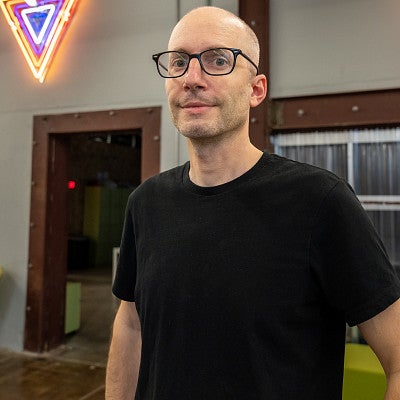
“It can be difficult to figure out where to start. Your first idea always seems really good. But how can you help students come up with 20 really good ideas so they have options? My strengths lie in helping students practice and become better at conceptualizing their design ideas.”
For one of his class exercises, Faste asks students to sketch two or three basic forms, such as a cube, cone, sphere, or cylinder—then combine them, making slight changes to draw 50 unique forms. He then instructs the students to start over and do the exercise again. He encourages them to tolerate “bad” ideas, then work to improve them while honing their abilities to express concepts visually.
The assignment isn’t academic and it’s not busywork. It’s a mental (and physical) muscle exercise for designing products, a profession Faste understands firsthand.
His portfolio includes handheld video games, Scandinavian Airlines service trays, and virtual reality headsets, to name just a few creations. At Los Angeles-based WET Design, he led the team that created a kinetic water-and-ice attraction at CityCenter Las Vegas. One of his most rewarding projects, he says, was designing an insulin pen for Eli Lilly and Company.
“Something about working on that medical product was great,” Faste says. “People are going to interact with it every day. It’s going to help them with their health.”
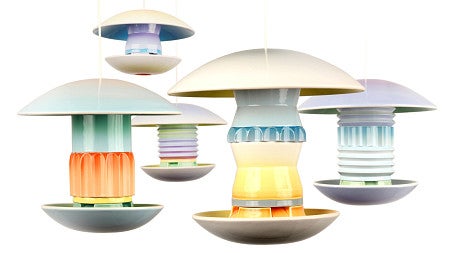
Reading eventually became easier for him. But he was already part of a visual world that led to an interest in design and a broader understanding of its importance.
“Design shapes our lives,” Faste says. “If you have a crummy pair of shoes, they can give you blisters. The design behind something you use every day—forinstance, your toothbrush—can be pleasant or make life less enjoyable, or even cause health problems or injury.
“Consider life before and after smartphones. That design has shaped our culture, ideas, and how we spend our time. There are problems and benefits. But people designed them, and they’ve had a huge impact.”
In addition to professional experience, Faste offers a diverse background in fine arts and academics. He studied studio art, mathematics, and computer science at Whitman College in Washington, and earned a master of fine arts in painting at Cranbrook Academy of Art in Michigan. Before coming to the UO in 2010, he taught drawing, rendering, and sketching at California State University Long Beach. He’s exhibited his furniture and paintings internationally.
At the UO, Faste helped advance the product design program, led design drawing courses, and taught senior studios. In 2015, he received the Industrial Designers Society of America’s Young Educator of the Year award.
“Trygve’s an amazing teacher,” says Morgen Olsen, a senior product design major from Portland. “He’s incredibly talented at drawing, very engaging, and an expert in design. He also has a lot of wisdom. He shows us the ropes through specific examples and takes the time to go over things multiple times.”
Olsen remembers her first class with Faste. “It was my first class on my first day of college,” she says. “I was so nervous. But I enjoyed it. During the early design classes, different students have very different skill levels. Trygve understood this and was able to set specific goals for each student.
“It was a nice transition from high school to college, to take the time and start taking things seriously. If you want to get serious about design, you have to put in the extra work. Trygve was very honest. He was there along the way to help if you needed it.”
Teaching tomorrow's designers
The product design department, which started in 2008, offers a bachelor of fine arts. Students participate in a challenging, hands-on environment where they develop ideas, transform them into reality, and explore professional opportunities. They spend their final year at the UO’s Portland campus. A master of science program in sports product design was added in 2016. Graduates have gone on to work at Nike, Columbia Sportswear, Tesla, and Intel.
In 2019, Faste was honored with the endowed chair funded by alumni Mary and Tim Boyle. Tim Boyle, BS ’71 (journalism), is CEO of Columbia Sportswear, and the Boyles are among the UO’s most dedicated donors, with gifts to the design college, the School of Journalism and Communication, the Lundquist College of Business, and more.“The Boyle chair is a big honor,” says Faste. “For one thing, Columbia is legendary in our field. It’s gratifying to be recognized as somebody who is appreciated by the university and the donors. It demonstrates how this role of running our department is valued.
“The chair also includes additional research funding that I can use for my work. It’s been incredibly helpful. Even with COVID, I’ve been able to hire four advanced product design students so far—two in previous years and two this year.”
And students, says Faste, make the work inspiring.
“You see how much impact the teaching is having on their growth as young designers,which is having a direct impact on the future of design. It’s very rewarding.”
Good design benefits the US economy and helps us compete globally, says Faste. It could also help us address pressing global issues.
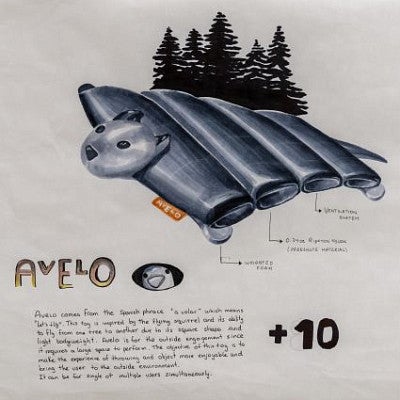
“The Earth has finite resources. If we’re making single-use objects—or poorly made objects that are going to have a very short life span—that is going to have an impact on our planet. We don’t have infinite stuff and we can’t continually take and dispose of resources. There’s no ‘away.’ Garbage just goes somewhere else.
“If people love the products they own, they will form relationships with them. The products will stand the test of time and will be repaired, fixed, and passed down from generation to generation. There’s an initial impact on our planet, but they are sustaining their value, their use continues, and they don’t need to be replaced.
“That’s why it’s important to have good design—as opposed to just a thing.”
Expertise in industry
Back at Faste’s drawing class in downtown Eugene, sophomore product design major Noah Conklin presents his toy idea, Stixtentions. These rubber connectors, handles, and bases give children a way to connect sticks to create forts, shapes, or whatever they can imagine.
It’s one of the simplest ideas of the class—and one of the most popular. One student eagerly suggests expansion packs. Another gushes he “totally would have played with these as a kid.”
Conklin, who plans to become a furniture designer, says Faste’s insights into the industry are just as valuable as his knowledge of artistic techniques.
“In this specific class, he’s teaching us how to draw,” Conklin says. “But because of his background, he also offers tips, things you wouldn’t know unless you had been in the industry. If I have a question about professional life, how to find an internship, or advice about a project, he’s a great person to go to. He’s been there.”
Ed Dorsch, BA ’94 (English, sociology), MA ’99 (journalism), is a staff writer for University Communications.




